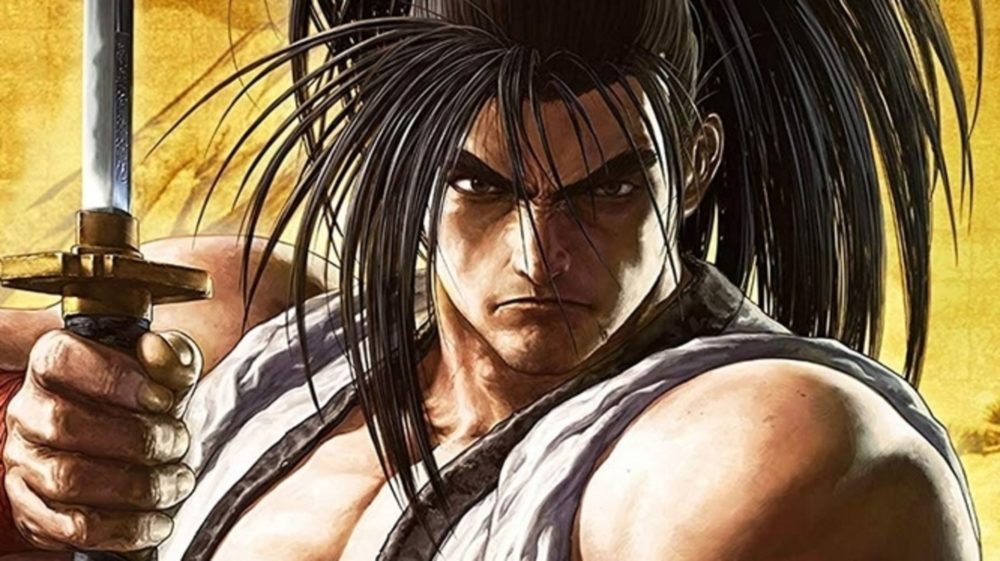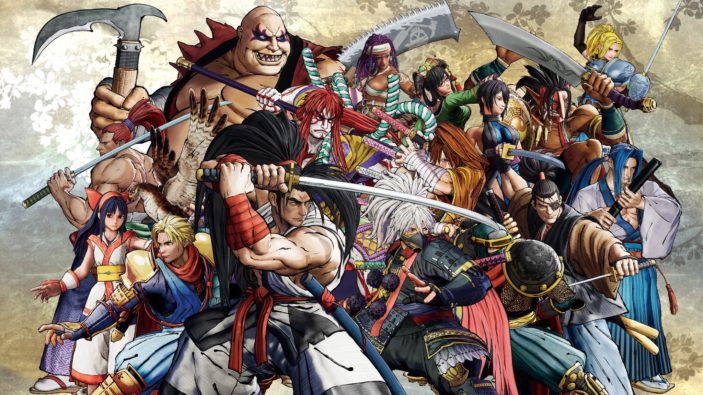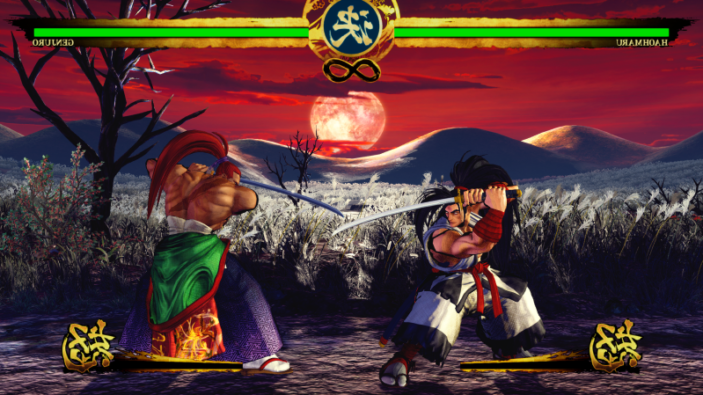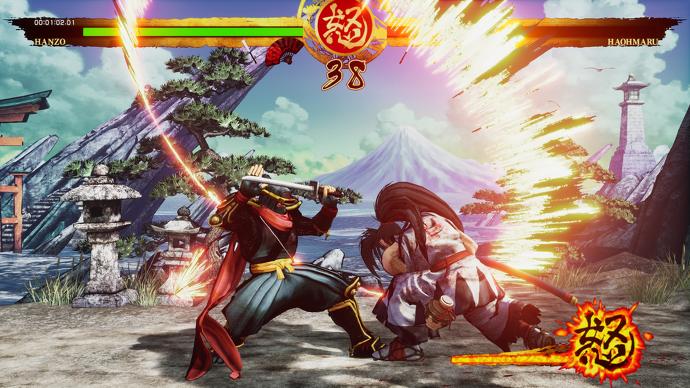
I’m a huge fan of the fighting game genre. Mortal Kombat, Tekken, Street Fighter, Soul Calibur. You name it, I love it. But Samurai Shodown, a venerable SNK franchise I had heard of but never played, had eluded me. Part reboot, part sequel, the latest entry in the long-running series (which reduces the title back to a simple Samurai Shodown) bursts onto the scene with both a familiar look and nuanced features that allow it to shine as a balanced fighter.
If you haven’t heard of Samurai Shodown before, there might be a reason for that. An incredibly popular fighting series in its native Japan, Samurai Shodown has been an FGC staple since 1993 when it premiered on the Neo Geo gaming console. In the years since it has become a Japanese arcade stalwart, but it never picked up much traction in the West, and it’s practically non-existent in Australia. For more mainstream fighting fans like myself, we had our Tekkens, our Mortal Kombats and Street Fighter 2‘s and that was good enough for us. Samurai Shodown presents itself as a “tactical fighter” of sorts, opting for stance, positioning and timing over fast and furious combo-based gameplay. While it’s certainly a traditional fighter in some respects, taking the tactical approach allows you to get the most out of the experience. Though it takes some getting used to, it can become quite satisfying once you learn the ropes. Samurai Shodown brings with it 16 fighters, all with varied appearances and move sets, each bringing something intriguing to the table. Returning characters like the noble Haohmaru and hilariously huge Earthquake (a character famously removed from the 1993 Sega Genesis and Sega CD versions due to size and memory limitations) remain fun and interesting. Newer characters like Wu Ruixiang are so clumsy to the point where it’s charming, as her ability to summon a dragon is balanced by her need to look for her glasses when she’s disarmed. It’s a nice little quirk, and only adds to the variety of both the game’s aesthetics and mechanics.

When it comes to core gameplay, Samurai Shodown shines. The steep learning curve may scare off those casual fans, and while I will elaborate on that later, there is a sense of accessibility that can be gained, provided you are willing to abide by the tactical implications set out for you. Players are assigned four main attacks, consisting of light, medium and heavy strikes, and a kick to round it all off. Directional commands can be added to strikes to change patterns and influence combos, and for the most part, it all sounds like standard stuff. However, Samurai Shodown slowly tweaks its gameplay into something much more tactical. While there is wiggle room for button mashers, don’t expect to absorb the maximum impact of the experience by any means. While some characters are easier to latch onto, you’ll find that when these characters start abiding by the tactical nature of the experience, they are quite simply more fun to use. On top of regular strikes and combos, players are able to sidestep, counter, disarm and even dismember opponents with well-timed button prompts, taking advantage of the fight in an instant. Players are also equipped with a Rage Gauge, which allows players to build it up in order to access stronger attacks, while they can use a full bar to inflict a devastating attack. However, once the full bar is utilised, it is lost for the remainder of the fight. It’s these additional decisions which can heavily influence the experience, but I personally recommend you play through the Dojo and Tutorial modes in order to familiarise yourself with these mechanics.

When it comes to modes, Samurai Shodown feels a little dated. Sure, it’s all about the fighting, but from the story mode to the dojo mode, anything above fighting is a little thin in terms of variety. The story mode consists of minor cutscenes thrown in between each characters arc as you fight across multiple arenas. No story really amazed me, and you can think of these stories as similar to those seen in the Tekken or Street Fighter series. With both Mortal Kombat and Injustice taking their series to new heights in terms of story, it’s a shame Samurai Showdown didn’t take this opportunity to jump on board and present a story beyond a cutscene sandwich, covering each end of the gameplay. With both online and offline versus modes for both casual and ranked fights, the depth never really extended beyond aiming for win streaks. However, the Dojo mode proved equally engaging as a way to train and improve. The Dojo mode basically allows you to fight against the ghosts of other players who adapt to your play style and for you to think ahead. It’s here that I personally gained the most from the experience and honed my skills, as you are constantly encouraged to try new moves and in turn outwit your opponent who is adapting to your style in the first place. But in this mode, the difficulty and steep learning curve of the experience got to me.

While Samurai Shodown is in no way difficult to control, it’s just hard to learn. Button mashing might be 101, but when the tutorial lays down countering and disarming opponents within your first 5 minutes, the nudge in your back becomes clear. It’s just sad that due to the easy to learn controls, the game quickly morphs into subtle directional combos and precise timing leaving you feeling conflicted, deciding between smashing buttons, and looking smooth as hell. Lastly, it should also be mentioned that while I played on a controller, some moves were awfully hard to complete using the directional buttons, and required the use of the analogue stick to complete successfully and repeatedly, leaving me to believe an arcade stick might still be the best way to experience a fighting game of this nature.
Overall, Samurai Shodown is a fantastic fighting experience that gets better as you do, adapting to its tactical nature and learning from the game as the game learns from you. The controls might be easy to understand, but button mashing is not encouraged, as subtle moves and well-timed decisions could prove just as dangerous. A colourful and varied character roster keeps things fresh, and the Dojo mode provides an interesting twist on the basic tutorial mode, as it adapts to your play style. While the story mode leaves much to be desired, and the tactical nature might be too much for those looking for a more casual experience, those happy to sink a few hours to get past these initial learning curves may find that the grass is well and truly greener on the other side, with a fighter that stimulates the brain and reflexes first, in order to get the most of the sword as a result.
FOUR STARS (OUT OF FIVE)
Highlights: Solid and satisfying mechanics; colourful and diverse character roster; engaging Dojo mode
Lowlights: Steep initial learning curve; some unnecessarily hard directional combos for a controller, lacklustre story mode
Developer: SNK Corporation
Publisher: SNK Corporation, Athlon Games
Release Date: Out Now
Platforms: PlayStation 4, Xbox One, Windows PC, Nintendo Switch, Arcade
Review conducted on PlayStation 4 with a retail code provided by the publisher.
